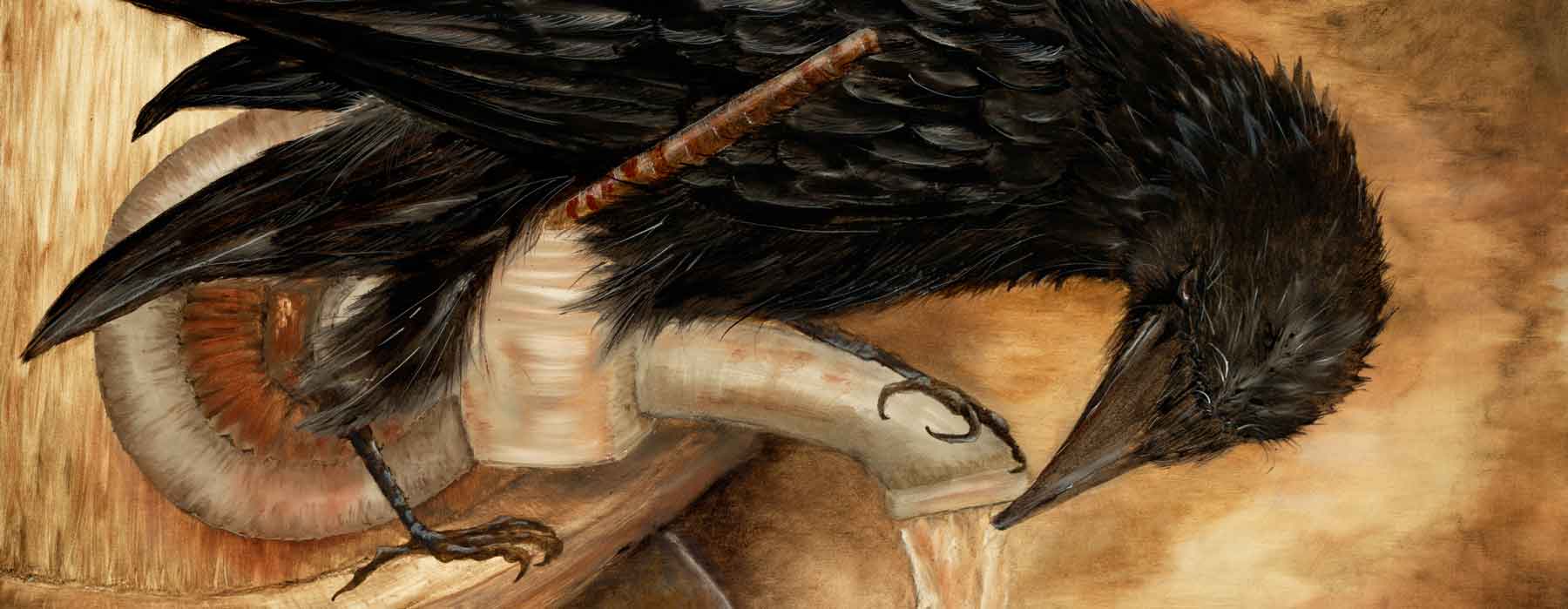Black Cohosh or Doll’s Eyes?
Trying to differentiate between black cohosh and doll’s eyes before they come into bloom, has been frustrating. It’s very easy to tell once they begin the blooming process as the flower stems originate in different places and the flowers themselves are very different.
Both of these woodland herbs grow in the same environment, and both are ginseng companion plants.
But when only greenery exists, they both look so much alike, it’s uncanny. This is the first year I’ve had two colonies of both to watch as they mature. My “intuition” tells me which is which so I want see if I can confirm my psychic inference, lol. In the meantime, I’ve been doing research online to see if anyone else can offer definitive proving methods.
I thought I’d found one way in a study posted online at the Canadian Universe’ Laval site – but in the end it proved inconclusive. The study, while not about differentiating the plants, is quite interesting if you would like to know the metal/mineral composition of various woodland herbs grown under different conditions.
It was the picture that caught my eye- an image of the symmetrical vs. asymmetrical leaf patterns on the cohosh. I’d never noticed that before about them, and though “ah-ha! That might be the difference.” But of course it wasn’t that easy. Both the plants I suspect to be black cohosh and the ones I suspect to be doll’s eyes have this same leaf pattern. It’s probably common to the Actaea genus.
Going to the Woods for Research
So it was time to go out for a little hands-on research. I took the 4-wheeler out to an area where I know both of the plants live. Along with the black cohosh and doll’s eyes, there’s also a bunch of other woodland herbs that enjoy this little ginseng habitat. I was glad to have on long sleeves and pants because the nettles are up a ready to sting right about now.
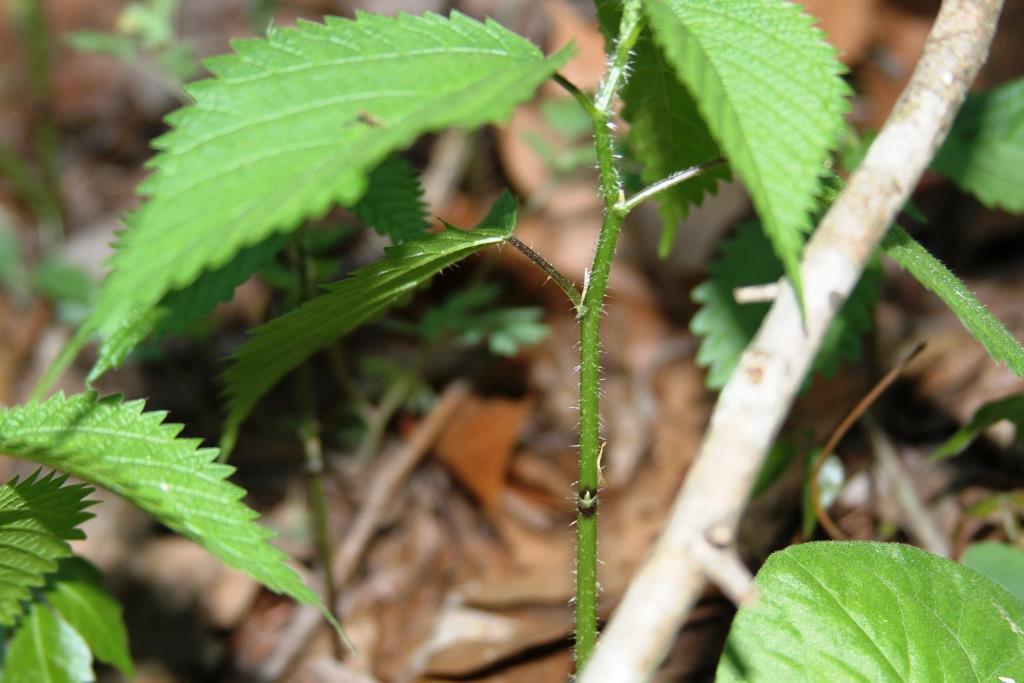
I moseyed around in the ginseng habitat (this particular habitat doesn’t have any ginseng residents, however), looking at the two that are puzzling me. None of what I think are black cohosh have any signs of a flower stem yet. None of the ones I think are doll’s eyes did either – except one. I did finally find one of those with a small flower stem and bud cluster.
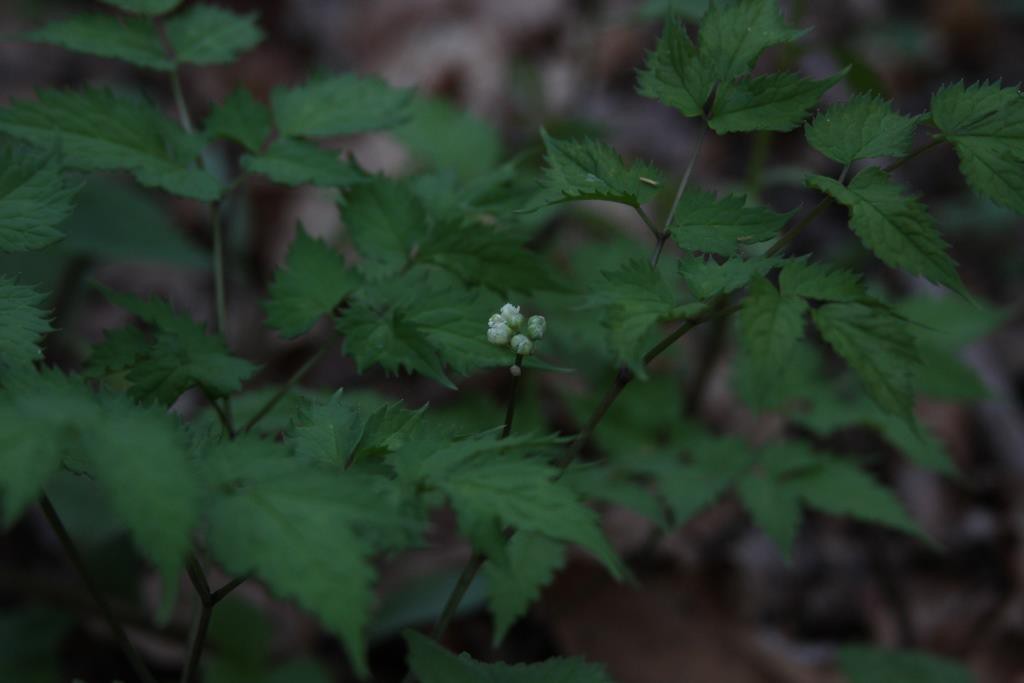
Now I am going to be curious to see if the ones I think are black cohosh turn out to really be the cohosh.
Going to Ground
When I’m in the woods inspecting and photographing plants like this, I am often right down on the ground at eye level with stem bases. It’s hard to get good photos of short plants if you don’t do that, and besides, the bases of stems often have clues like leaf buds and such. And besides all that, I just love being in close contact with the forest floor. The smells are wonderful and it’s usually cooler closer to the ground level on hot days.
Most importantly, though, is that if you’re not close to the ground you’ll miss things like this wild ginger bloom, which only happens at or just below ground/leaf debris level.
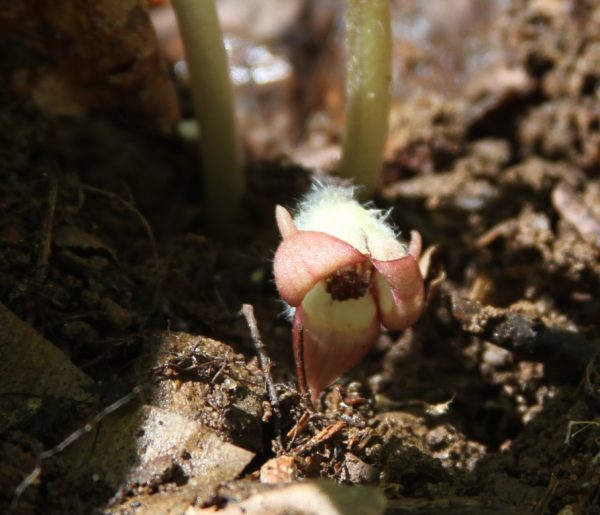
The sun slipped over the mountains while I was still crawling around uphill and lying prone among the nettles, black and blue cohosh, and doll’s eyes. The woods were so dark now I needed a flash to get a good photo of this pretty fern on my way out.
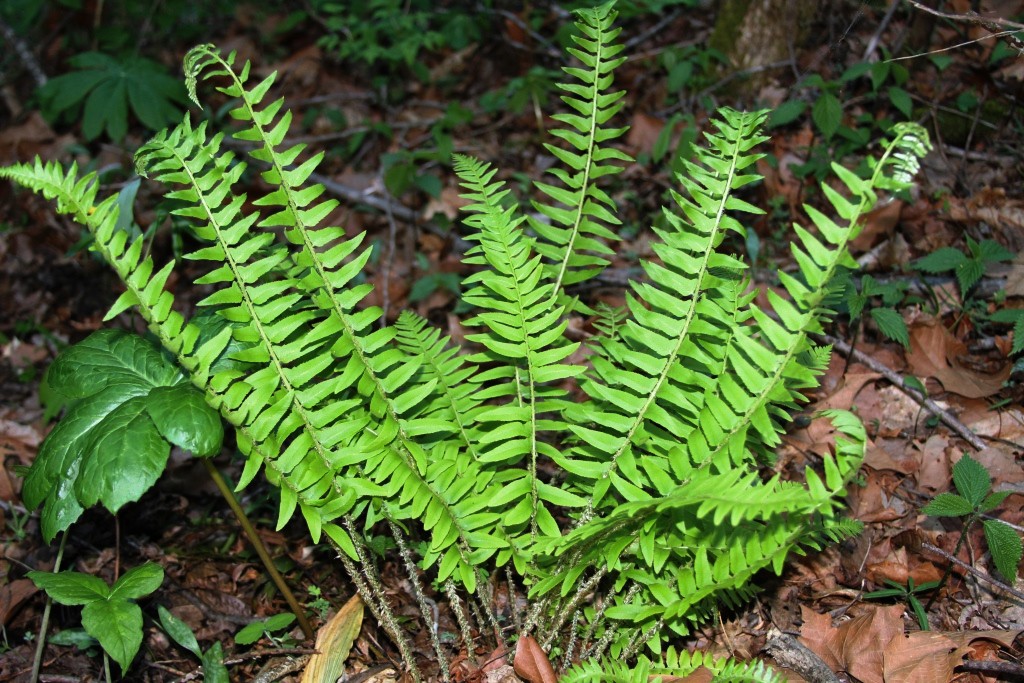
Conclusion
I’ll have to wait for the black cohosh to flower, but I think I can see, or rather, sense, the differences early on. The plants *told* me, in that way non-human things “talk” (some of you will understand this, some of you will just think I’m nuts, I know…and some will call it “intuition”), who was who from the beginning, but my skepticism persists. I still do not entirely trust that little voice and the logical part of me wants evidence. It’ll come in a month or two when the black cohosh blooms. When it comes to using herbs medicinally or as food, where a look-alike is deadly, I’ll never rely on intuition alone.
Satisfied enough for now, I got up and brushed off the humusy forest soil and leaves from my clothes and headed home to see how many ticks I’d managed to gather this time.
A Photogenic Anemone
Saw this on my way back and knew it would make a good photo with the creek behind it.
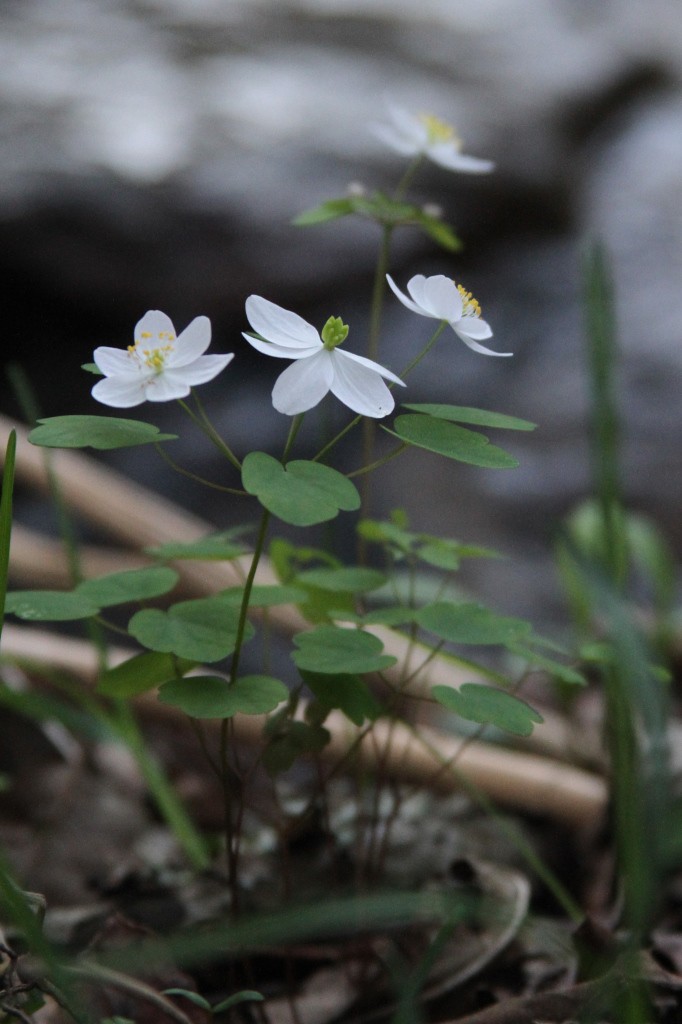
Ginseng Habitat Garden
If you want to drive out to the nursery, I have a ginseng habitat garden where you can see the plants growing in the woods. This will help you learn to identify them in their natural habitats.
While the garden is a restored habitat and I have trails and will have signs posted, it’s designed in a way to truly mimic what you’d see in the wild (except for the trails and signs, lol).
It’s open to the public, but since there is no cell signal or phone/electricity at the nursery you’ll need to set up an appointment until I can get a regular schedule to be out there. Just email me to let me know when you’d like to come on any day except Tuesdays or Saturdays.
